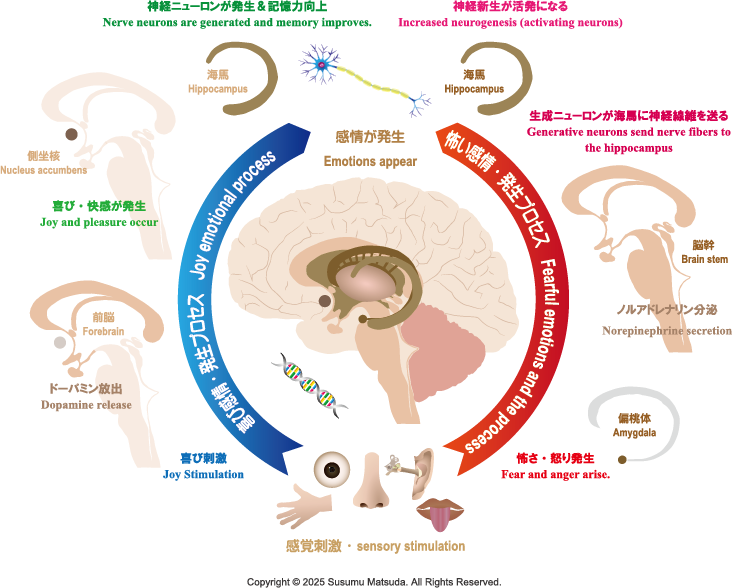Following on from the previous post, I will explain the process of emotion generation. Emotions are generated throughout the body through sensory organs and nerves in response to sensory stimuli, but this time we will study the process of emotion generation within the brain. In particular, we will focus on “fear” and “joy,” which are related to a person’s sense of security, and study the process of emotion generation. The emotion of fear is an emotion that arises when a person is faced with a situation that seems to be life-threatening. When a person experiences something frightening, the limbic system instantly judges the situation as dangerous, and the hippocampus generates the feeling of fear. Simultaneously, noradrenaline is released from the brainstem. Noradrenaline-producing neurons send nerve fibers to the hippocampus. Neural activity becomes more active, creating a situation where new neurons are more likely to be generated. After a frightening experience, when the person realizes they are still alive, dopamine is generated in the forebrain. The feeling of joy is generated in the nucleus accumbens. The hippocampus recognizes the joyful situation, generating nerve neurons, and simultaneously temporarily improving memory.

The emotions of “fear” and “joy” activate neurons and generate new neurons. Experiencing intense negative emotions like “fear” and intense positive emotions like “joy” repeatedly in real life puts a strain on the body and causes stress, but it also activates the brain. However, if these emotions of “fear” and “joy” are experienced virtually through the five senses, it is possible to stimulate the mind and activate the brain with less strain on the body. In this way, we believe that repeatedly experiencing the emotions of “fear” and “joy” leads to a sense of peace of mind for human.